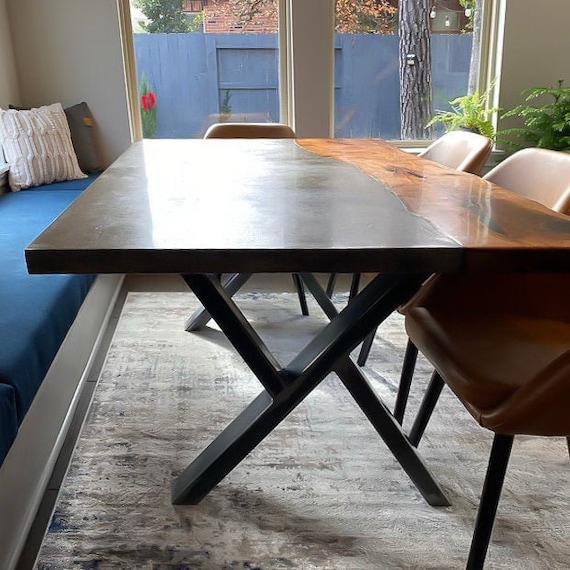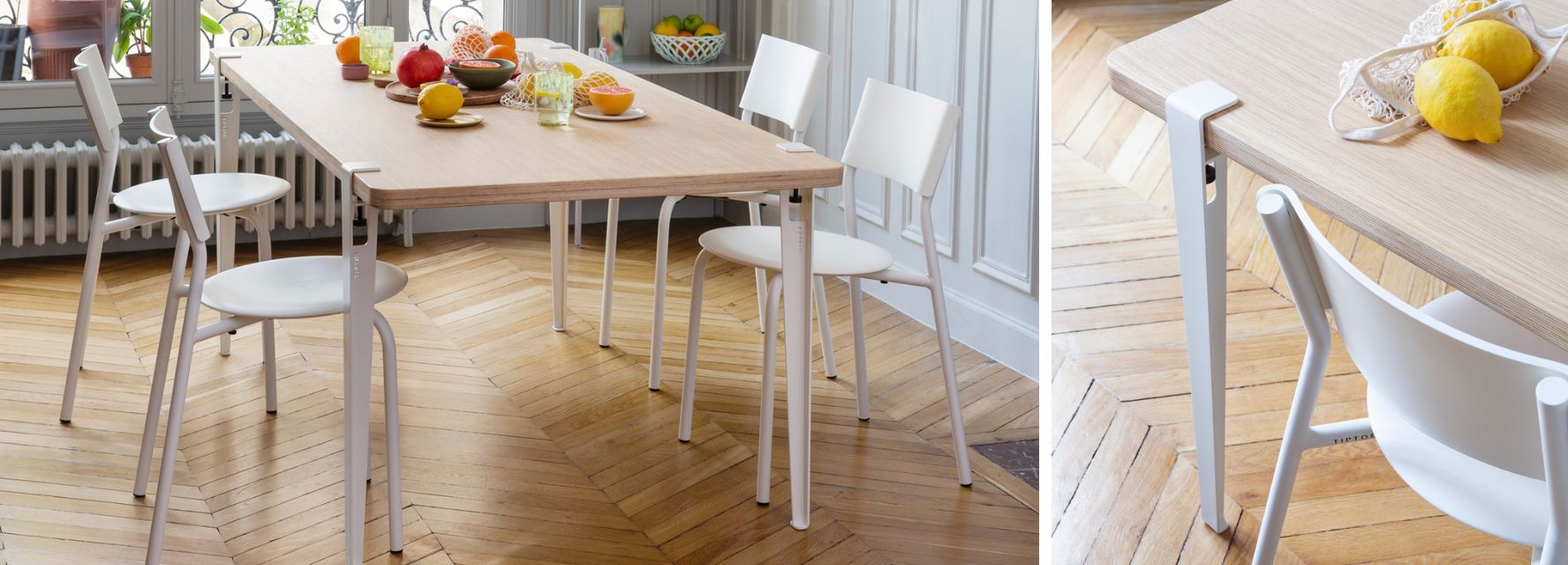Change Your Furnishings with Costs Dining Table Legs Wood Options
Change Your Furnishings with Costs Dining Table Legs Wood Options
Blog Article
Key Factors to Remember for Table Legs Timber Choices
When picking wood for eating table legs, a number of important elements necessitate careful consideration to make sure both capability and visual allure. The option of timber type, defined by its toughness and distinct grain patterns, plays a critical role in the overall design and longevity of the item. Additionally, one should ponder upkeep requirements and the ecological implications of sourcing products. As these aspects link, they significantly affect the last outcome of your table. Understanding the nuances of each factor can be intricate, leading to important choices that warrant more exploration.
Wood Kind and Attributes
When picking wood for eating table legs, it is necessary to understand the special qualities of numerous wood kinds. Various timbers offer distinctive advantages and drawbacks, influencing both the longevity and visual charm of the completed product.
Hardwoods, such as maple, cherry, and oak, are generally preferred for their toughness and resistance to put on. Oak, recognized for its remarkable toughness, likewise features a prominent grain that can include character to the table. Maple provides a smooth surface and is less susceptible to bending, making it a trustworthy selection for functional furnishings. Cherry timber, with its rich shade that grows gradually, provides a luxurious appearance yet may call for more maintenance to avoid scratches.
On the other hand, softwoods like pine and fir are much more inexpensive and much easier to work with, yet they are much less long lasting than woods. Pine is light-weight and features a warm, rustic appearance, making it a popular choice for laid-back dining setups. However, it is extra prone to scratches and dents.
Understanding these features will certainly aid in making an educated decision to make certain the legs of the table fulfill both useful and visual requirements.
Grain Patterns and Aesthetic Appeal
The wood's grain is not just a visual attribute; it imparts an unique character and charm to each piece. Different timber species display distinct grain patterns, varying from the straight lines of maple to the intricate swirls of oak and the striking number of walnut.
Additionally, the positioning and range of the grain can affect the regarded dimension and sophistication of the table. Larger, a lot more pronounced grains may lend a vibrant, significant impact, while finer, subtler grains can produce an improved, downplayed look. In addition, the completing process can even more enhance these patterns, stressing the natural appeal of the timber and highlighting rich shades.
Eventually, the choice of grain pattern ought to harmonize with various other layout aspects, such as the tabletop and surrounding furniture, guaranteeing a cohesive visual that boosts the eating experience. Thoughtful selection of timber grain not only contributes to the table's beauty but also shows the proprietor's preference and style.
Resilience and Toughness
The toughness and stamina of table legs are vital factors to consider for making certain long life and security in any type of eating room. Selecting the appropriate timber is critical, as various types display varying levels of resilience. Hardwoods such as maple, cherry, and oak are typically chosen for their fundamental toughness and my company resistance to wear. These products not only endure day-to-day use yet additionally support heavy loads, making them suitable for dining tables that often fit several diners. Dining Table Legs Wood.

Inevitably, purchasing top notch timber and durable building approaches will generate a table that stands the examination of time, while supplying a dependable foundation for many meals shared amongst family and buddies. Focusing on toughness and strength makes recommended you read sure that your eating table stays useful and visually pleasing for several years to come.
Maintenance and Care
Appropriate maintenance and treatment are important for protecting the toughness and strength of table legs made from timber. Regular cleansing is vital; using a soft, moist fabric makes sure that dust and debris do not accumulate, which can bring about scrapes and monotony. It is advisable to avoid rough chemicals or rough materials that could harm the surface.
Additionally, using a suitable wood gloss or wax occasionally can help keep the shine and secure the wood from moisture and spills. Nonetheless, it is essential to follow the maker's recommendations regarding the kind of product to make use of, as specific finishes might respond negatively to specific chemicals.
Moisture and temperature changes can also impact wood table legs, triggering them to warp or crack. It's best to put the table away from straight sunlight and warmth sources. Addressing these without delay can stop more damage. if the table legs have any damages or scratches.
Finally, regularly inspecting the joints and screws for rigidity is crucial to keep structural integrity (Dining Table Legs Wood). By sticking to these upkeep methods, homeowners can guarantee their wooden dining table legs stay enticing and functional for several years to find
Ecological Considerations
When picking timber for dining table legs, it's important to take ecological factors to consider into account. The sourcing and sustainability of timber are extremely important in lessening environmental impact. Going with wood from certified resources, such as those supported by the Forest Stewardship Council (FSC), makes sure that the lumber is gathered responsibly, advertising forest conservation and biodiversity.

Moreover, neighborhood sourcing of wood lowers transportation discharges, supporting regional economic situations while lessening environmental impact. It is also suggested to be familiar with the timber's therapy and ending up procedures, as particular chemicals can be harmful to both human health and wellness and the environment. By focusing on sustainable wood options, consumers can add to ecological preservation while enjoying the resilience and elegance of their eating table legs.
Conclusion
In final thought, selecting timber for dining table legs necessitates cautious factor to consider of different elements, consisting of timber kinds, grain patterns, and durability. The aesthetic allure of unique grain patterns can enhance the general design, while the strength of woods ensures longevity. Upkeep needs and ecological sustainability more influence timber choices, highlighting the relevance of sourcing from licensed or recovered materials. A notified selection procedure eventually contributes to a visually appealing and practical dining area that aligns with sustainable methods.
When selecting wood for dining table legs, numerous vital variables require careful factor to consider to guarantee both capability and visual appeal.Proper maintenance and treatment are essential for preserving the durability and strength of dining table legs made from timber.When picking timber for eating table legs, it's important to take ecological considerations right into account. By focusing on lasting wood selections, customers can add to ecological preservation while taking pleasure in the toughness and elegance of their eating table legs.
In conclusion, selecting wood for dining table legs requires mindful factor to consider of numerous aspects, consisting of timber types, grain patterns, and sturdiness. Dining Table Legs Wood.
Report this page